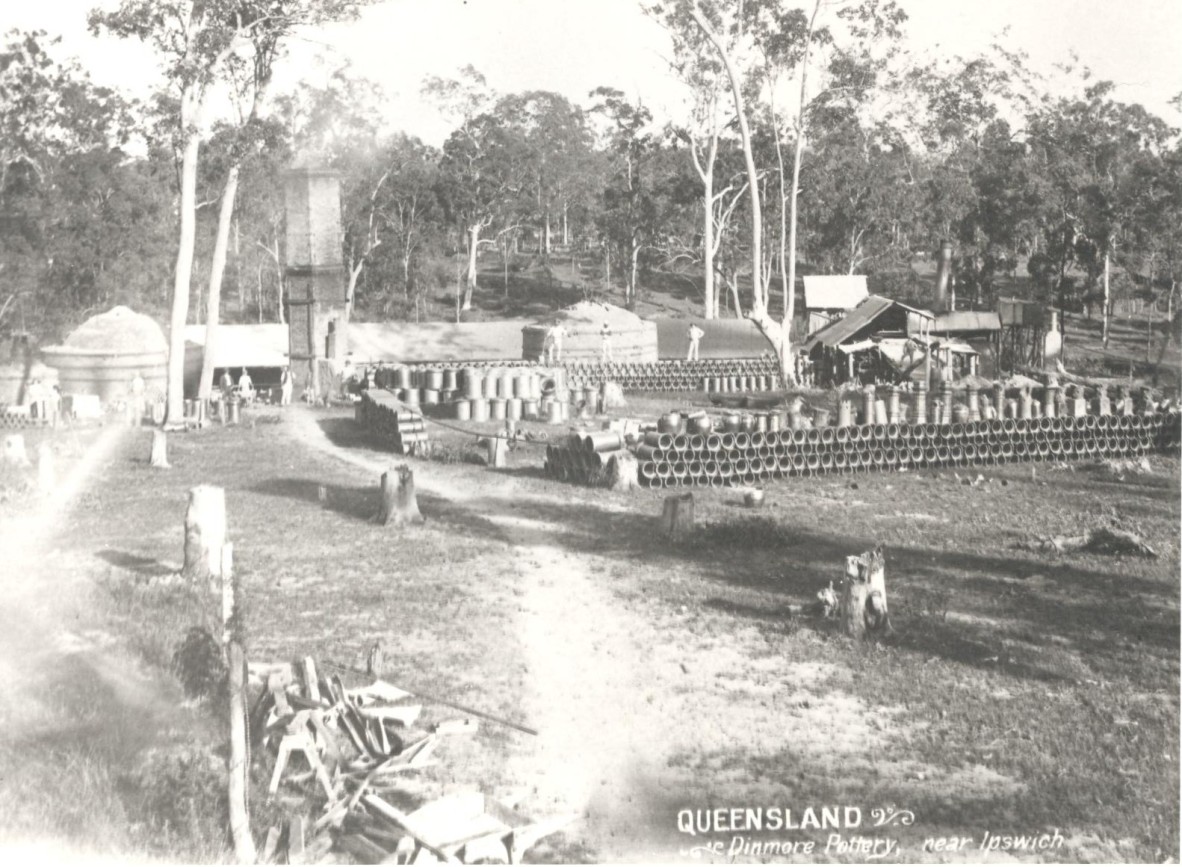Dinmore, to the north-east of the city, was settled as early as the 1870s with development progressing more rapidly from the 1880s, as shown by the opening of a railway station in 1884 and the establishment of a post office a year later. As well, the Dinmore area has been home to several large collieries and brick and pottery works, including the Old Aberdare Mine (1870), the New Chum Colliery (1882) as well as the Dinmore, Hudson and Rylance brick and pottery works. A number of other mines have also operated in the area, namely the Belmont, Rhonnda, Rylance and Whitwood mines. A school was opened in 1891, further evidencing Dinmore’s growth and development, however this school was recently closed. The actual name Dinmore is believed to be derived from the name of an English village, in Herefordshire, called Hope under Dinmore, believed to be the original home of some of the area’s early settlers.
The Dinmore Pottery was opened in the 1880s, close to the original Dinmore settlement, almost by chance, rather than by specific forward planning. The original plan had been to establish a new mine shaft on the site, however the clay found there was of such a high quality that the establishment of a pottery and brickworks was thought to be a more viable proposition. Bricks were to be the main product produced until the turn of the century when the owners, Gilson and Rumble began making pottery and related items, as well as continuing with the production of bricks.

This photograph, taken in approximately 1898, shows some of these goods stacked ready for sale, including pipes, pottery as well as what appears to be chimney pieces. We also see several workmen posed for the camera.
Dinmore remains a vibrant and important suburb in the city of Ipswich.
Brian Randall, Queensland Places Coordinator, State Library of Queensland
Comments
Your email address will not be published.
We welcome relevant, respectful comments.